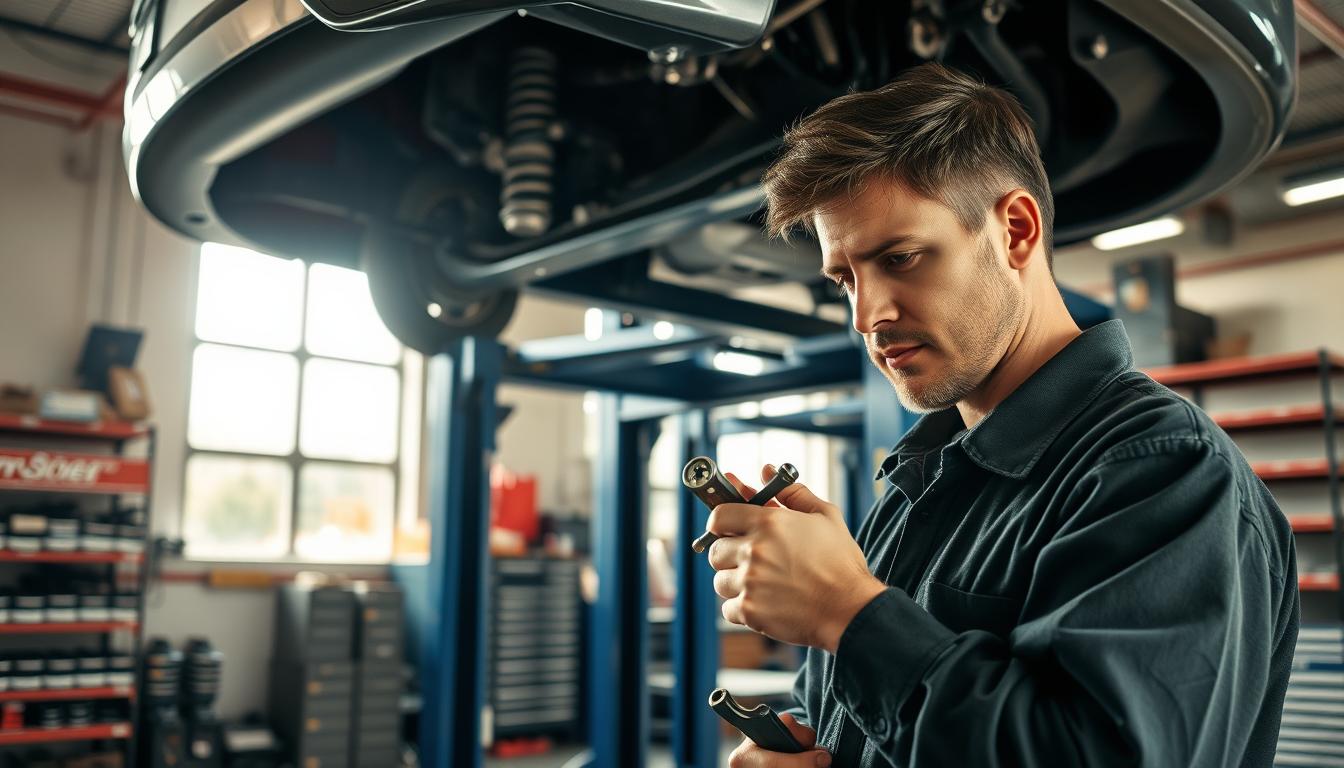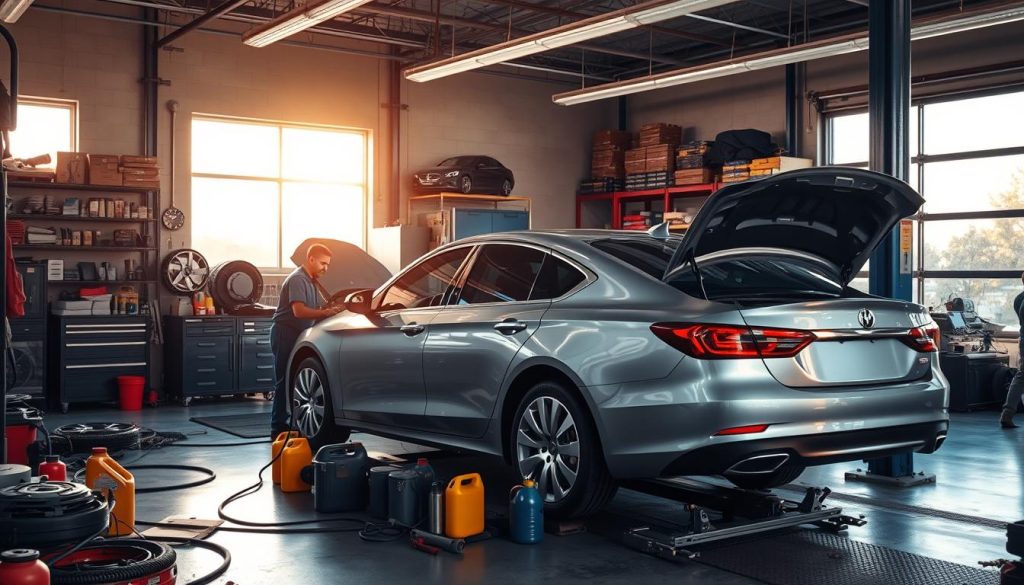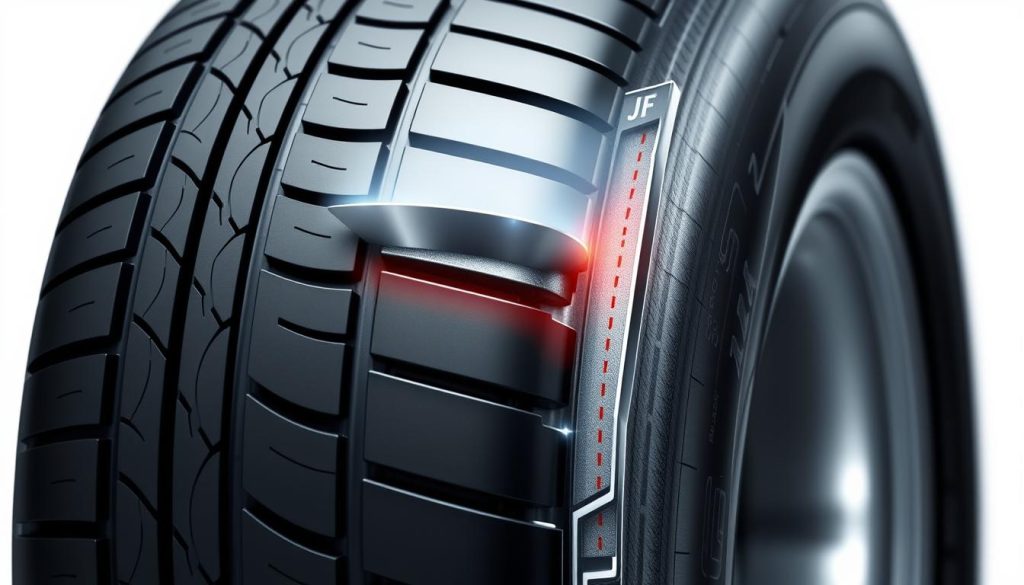Maintaining our vehicles is easy. We can do simple tasks at home to keep our car running well. Knowing when our car’s suspension needs fixing is key.
If our car feels bumpy, it might need suspension work. Not fixing it can cause big problems and make driving unsafe. By checking our suspension often, we avoid big repair bills and keep our car in great shape.
Key Takeaways
- Regular maintenance tasks can enhance vehicle performance.
- Identifying signs of suspension issues is critical for safety.
- A bumpy ride may indicate needed suspension repair.
- Routine checks can prevent expensive repairs down the line.
- Regular maintenance boosts the longevity of our vehicles.
Understanding Basic Car Maintenance
Knowing how to take care of your car is key. Keeping your car in good shape makes it last longer and keeps you safe. If you ignore small problems, they can turn into big, expensive fixes.
It’s important to take care of your car’s whole system. This includes the suspension. Knowing this helps you make better choices about when to see a mechanic.
Importance of Regular Maintenance
Regular car care is very important. For example, you should replace your shocks every 50,000 to 100,000 miles. This depends on how much you drive.
Replacing shocks takes about an hour for a pro. If you don’t, your car might not handle well. This can be a problem when you’re changing lanes or hitting bumps.
Common Myths About Car Care
There are many myths about taking care of your car. One myth is that you only need to check your car after a certain number of miles. But, it’s important to check things like belts, hoses, and brake pads often.
Another myth is that using premium fuel is always best. But, many cars do just fine with regular fuel. Knowing these myths helps you take better care of your car and avoid expensive repairs.
Essential Tools for DIY Car Maintenance
Doing car repairs yourself can save money and feel good. It’s important to have the right tools for the job. We need tools that make fixing cars easier and keep us safe while we work. Let’s look at the key tools and safety gear every car owner should have.
Must-Have Tools for Every Car Owner
For DIY car work, we need a good toolkit. It should help us with many tasks. Here are some tools every car owner should have:
- Wrench set: A variety of sizes is key for different fasteners.
- Screwdrivers: Both flathead and Phillips for different screws.
- Tire pressure gauge: To check tire air correctly.
- Jack: Important for lifting the car safely during repairs.
- Oil filter wrench: Needed for oil and filter changes.
Safety Gear to Consider
Using the right safety gear is also important. It keeps us safe from injuries while we work. Here are some important items:
- Work gloves: Protect our hands from sharp things and hot spots.
- Safety goggles: Keep our eyes safe from debris and liquids.
- First-aid kit: Good to have for small injuries.
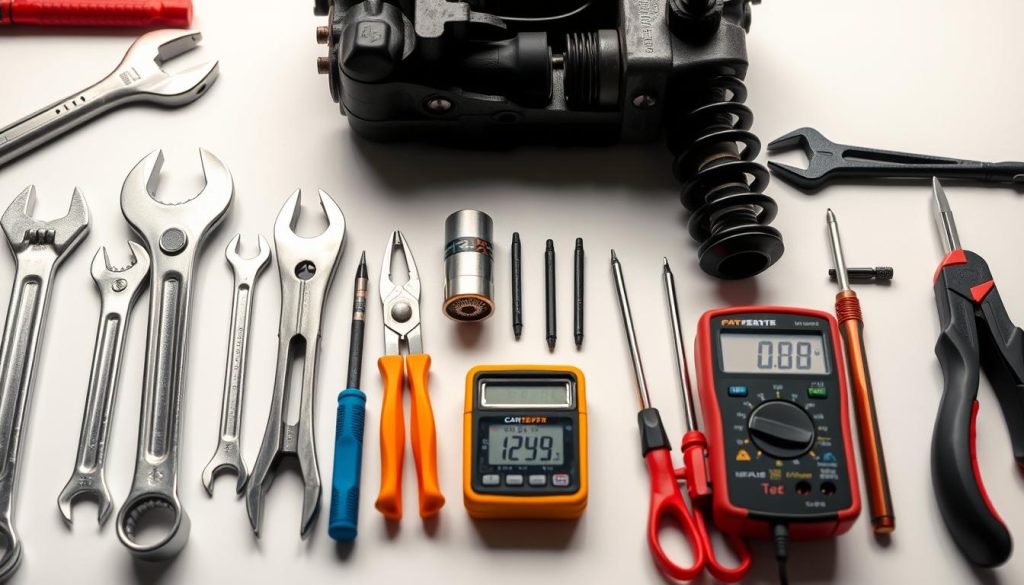
Checking and Changing Engine Oil
Changing engine oil is key to keeping our cars running well. It makes moving parts smooth, absorbs heat, and keeps the engine clean. If we don’t change the oil, our engine can wear out and overheat.
Why Oil Change Matters
Changing the oil on time makes our car run better. New cars need oil changes every 5,000 to 7,500 miles. Older cars might need it every 3,000 miles.
Using the right oil, like high mileage oil, helps the engine work well. If we ignore oil leaks, it can cause big problems like engine failure and fires. Look out for dashboard lights, oil stains, and low oil levels.
Step-by-Step Oil Change Process
Changing the oil ourselves can save money and feel good. Here’s how to do it:
- Make sure the car is parked on a flat surface and the parking brake is on.
- Drain the old oil by taking out the drain plug and catching it in a container.
- Put in a new oil filter and add a little oil to the gasket for a tight seal.
- Fill up with new oil, using the right amount and type as the manual says.
Changing the oil takes about an hour. Many shops also check other important parts for free. Regular oil changes help our cars last longer and run better.
Maintaining Tire Health
It’s very important to keep our tires in good shape. This makes our cars safe and run well. Checking and caring for our tires helps them last longer.
How to Check Tire Pressure
Checking tire pressure is easy and should be done every month. Here’s how:
- Find the recommended tire pressure on a sticker inside the driver’s door or in the owner’s manual.
- Use a tire pressure gauge to check each tire’s pressure.
- Put more air in if needed or let air out if the tires are too full.
Getting the tire pressure right is key for the best performance and safety on the road.
Rotating Tires: When and Why
We should rotate our tires every 5,000 to 8,000 miles. This helps them wear evenly and last longer. Signs you might need a tire rotation include:
- Uneven tread wear on the tires.
- Vibrations while driving that could mean misalignment.
- Changes in how the car handles or steers.
Regular tire rotation also makes our cars more fuel-efficient and comfortable to drive. It keeps our suspension system working right, making our cars stable.
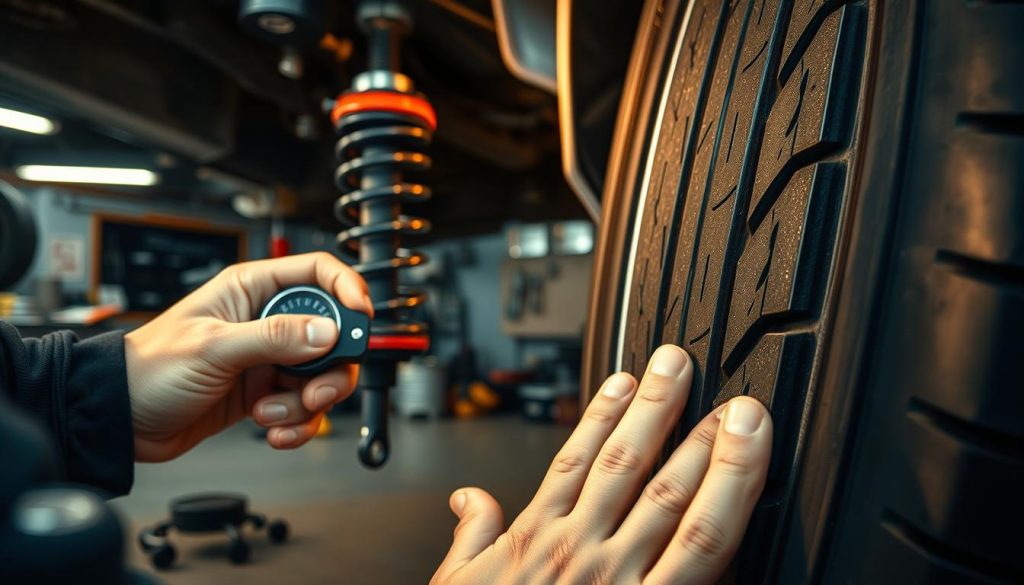
Inspecting and Replacing Wipers
Driving safely means we must see clearly. This is true, no matter the weather. Keeping our wipers in good shape is key. Knowing when to replace them helps us avoid dangers in storms or heavy rain.
Signs It’s Time for New Wipers
There are signs that tell us when to get new wipers. Look out for these:
- Streaking: Streaks on the windshield mean the wipers aren’t working right.
- Chattering: If wipers chatter or skip, they’re worn out.
- Cracking: Cracks or tears in the rubber mean it’s time for new ones.
- Water Buildup: If water stays on the windshield, your wipers are failing.
Simple Steps to Replace Wiper Blades
Changing wiper blades is easy and makes driving better. Here’s how to do it right:
- Move the wiper arm up until it’s straight.
- Find the release tab on the blade and press it to remove the old one.
- Put the new blade on the arm and click it into place.
- Lower the wiper arm back down to the windshield.
Checking for worn wipers and knowing how to replace them keeps us safe. Replacing them on time keeps our view clear, even in bad weather.
Keeping Your Car’s Battery Healthy
A good battery is key for your car to run well. Knowing how to take care of it helps avoid sudden problems. Signs of a bad battery include slow starts, dim lights, and corrosion on the terminals.
When a battery drops below 12 volts, it might be time for a new one. This usually happens after three to seven years.
Signs of a Failing Battery
Starting the car can get harder as the battery ages. This is because the cranking amps go down. If lights get dimmer or the radio stops working, it could mean the alternator is not working right.
This can stop the battery from charging. Testing the battery often helps catch these problems early.
How to Clean and Maintain Battery Terminals
Keeping battery terminals clean is important. Corrosion can make them not work right. So, we should check and clean them often.
Mix baking soda and water to clean off corrosion. Then, use a wire brush to get it all off. Taking care of your battery can make it last up to 30% longer. This means fewer breakdowns and smoother rides.

